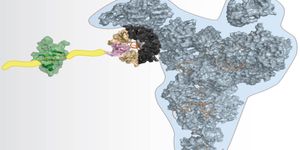The Allen Institute for Cell Science was founded by a contribution by Paul G. Allen, a cofounder of Microsoft, in 2014. They aim to study the various parts of the cell in their natural context instead of as individual parts. The Institute has created human induced pluripotent stem cells that have been genetically editing so that their various parts can be visualized in fluorescent color. The cells are meant to aid biomedical research; they are a tool to reveal more about healthy cells as well as the dysfunctions in cells that occur in disease. These cells are now being made publicly available.
“Each of our cells—the fundamental units of life—are like a city, with people and resources that move around and factories that generate those resources and carry out important functions,” said Rick Horwitz, Ph.D., Executive Director of the Allen Institute for Cell Science. “With these cell lines, we aim to give the cell science community a kind of live traffic map to see when and where the parts of the cell are with the clarity and consistency they need to make progress toward understanding human health and tackling disease.”
The CRISPR/Cas9 gene editing technology was used to add tags for fluorescent colors to the cellular structures that reside in human induced pluripotent stem cels. Rather than using a staining technique to label the structures, the tags can be used to follow the structure in a live cell throughout the life cycle.
“By lowering the barrier to entry for cell biologists wishing to work on iPS cells, the availability of these lines will usher in a new era in cell biology,” commented Anthony Hyman, Ph.D., Director and Group Leader at the Max Planck Institute of Molecular Cell Biology and Genetics.
This release includes five cell lines highlighting a set of major cellular organelles - the nucleus, visualized by tagging the protein lamin B1, mitochondria by Tom20, microtubules by alpha-tubulin, cell-to-cell junctions by desmoplakin, and adhesion by paxillin. More lines are set to be released in 2017.
“This kind of precise fluorescent tagging of structures in human stem cells is valuable for a variety of reasons, not least of which is that the pluripotent stem cells can be turned into a large number of cell types, like heart, brain or skin,” explained Ruwanthi Gunawardane, Ph.D., Director of Stem Cells and Gene Editing at the Allen Institute for Cell Science. “Our cells are healthy and as close to normal human cells as we can study in the lab, making these cell lines a powerful platform to identify the functions of genes, screen drugs, determine differentiation state and much more.”
“With these tagged cell lines, we get to ‘spy’ on the organization of healthy, normal human cells in a way that scientists never could before,” said Susanne Rafelski, Ph.D., Director of Assay Development at the Allen Institute for Cell Science. “The images and movies we can generate from these lines show the cell’s major structures with astonishing clarity and empower a broad, multi-structure view of how cells change as they execute their various activities and turn into different kinds of cells.”
It is hoped that these cell lines will not only aid in the understanding of basic cellular processes, but will also aid researchers investigating disease states. The genes of the cells can be manipulated in order to observe the disease mechanisms in culture, which could have major impacts on biomedical research and personalized medicine.
You can see videos of the rest the cell lines, like the one above, and read more about the release
here.
Sources:
NPR,
Allen Institute for Cell Science








